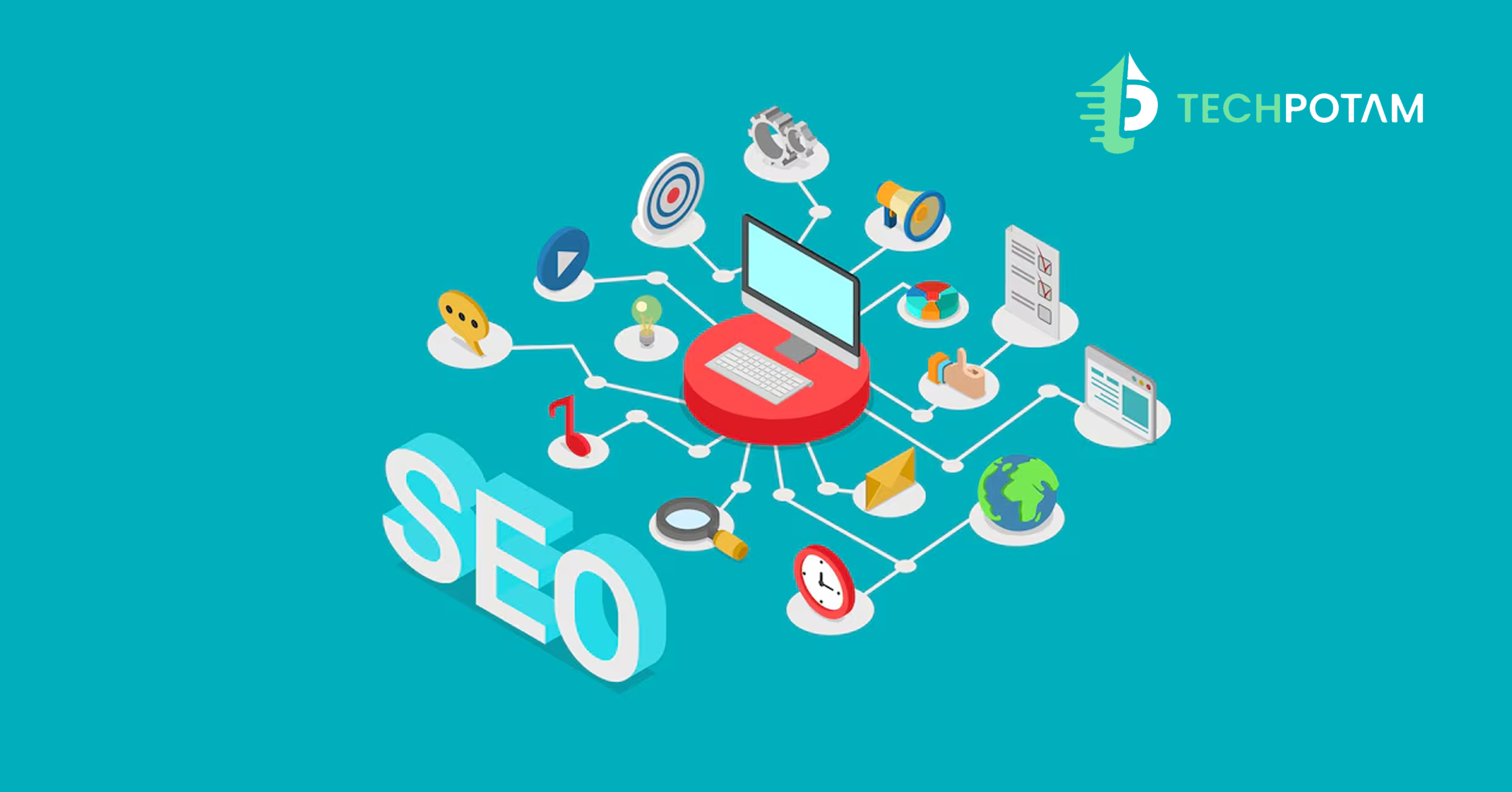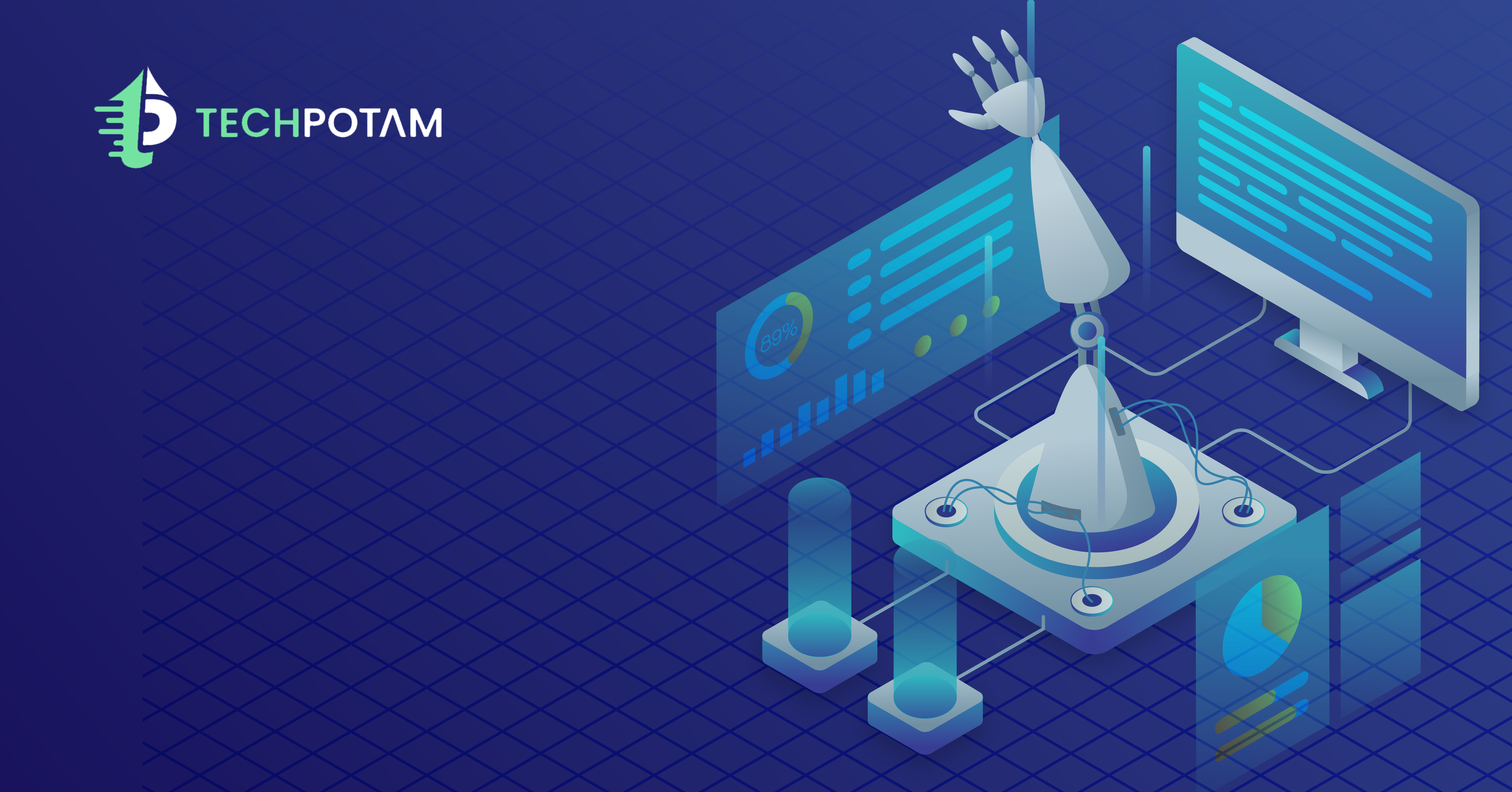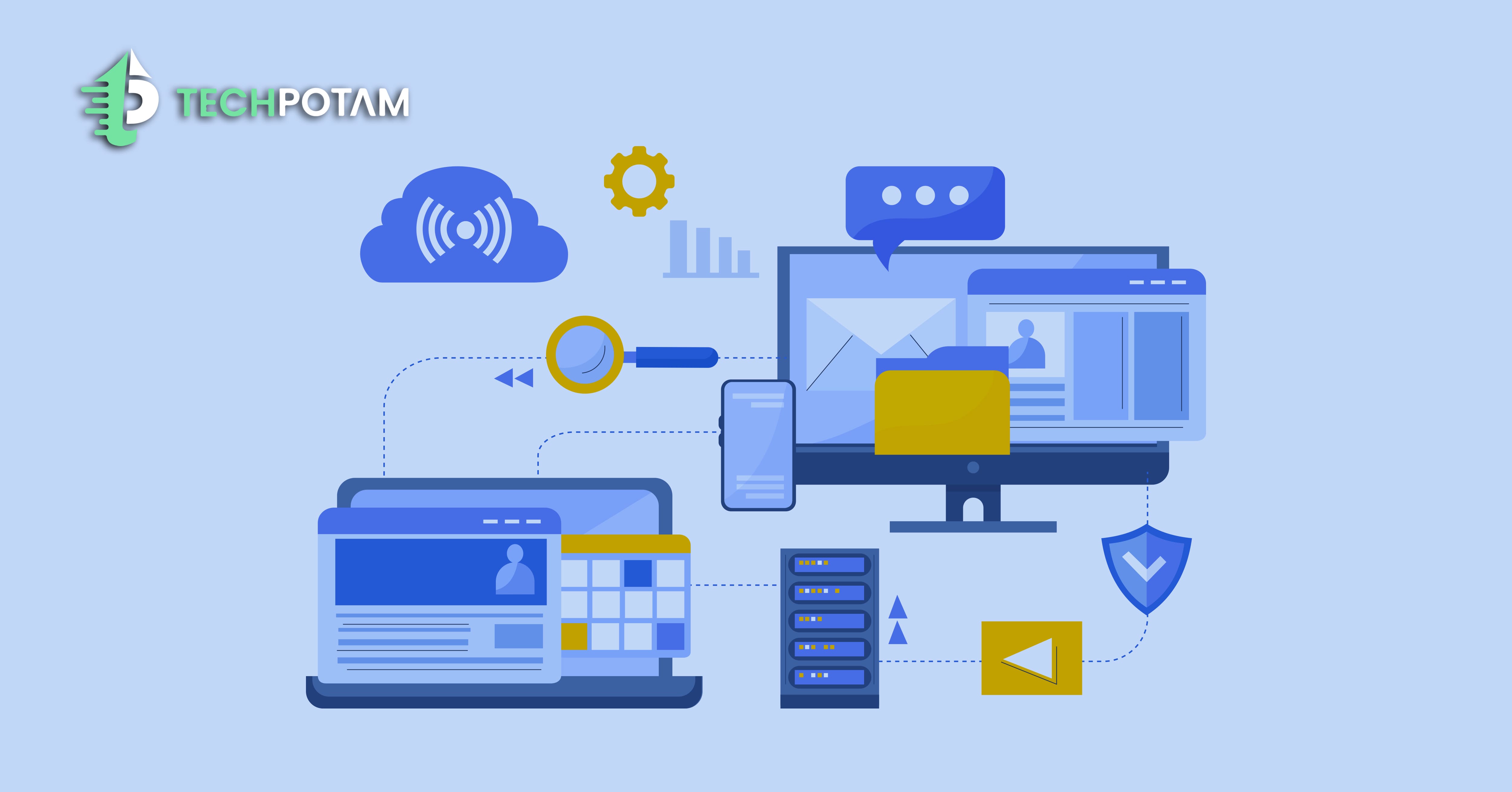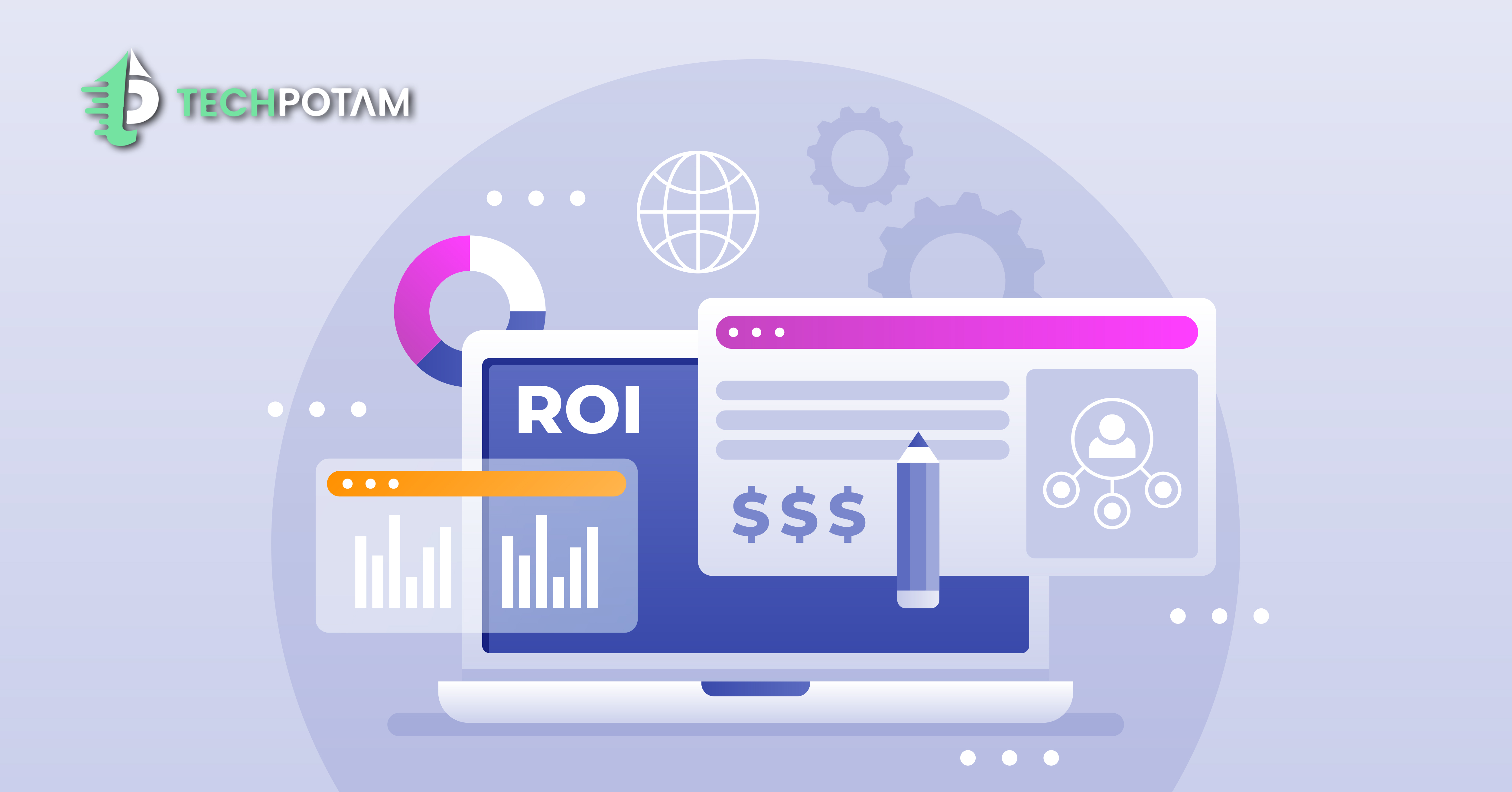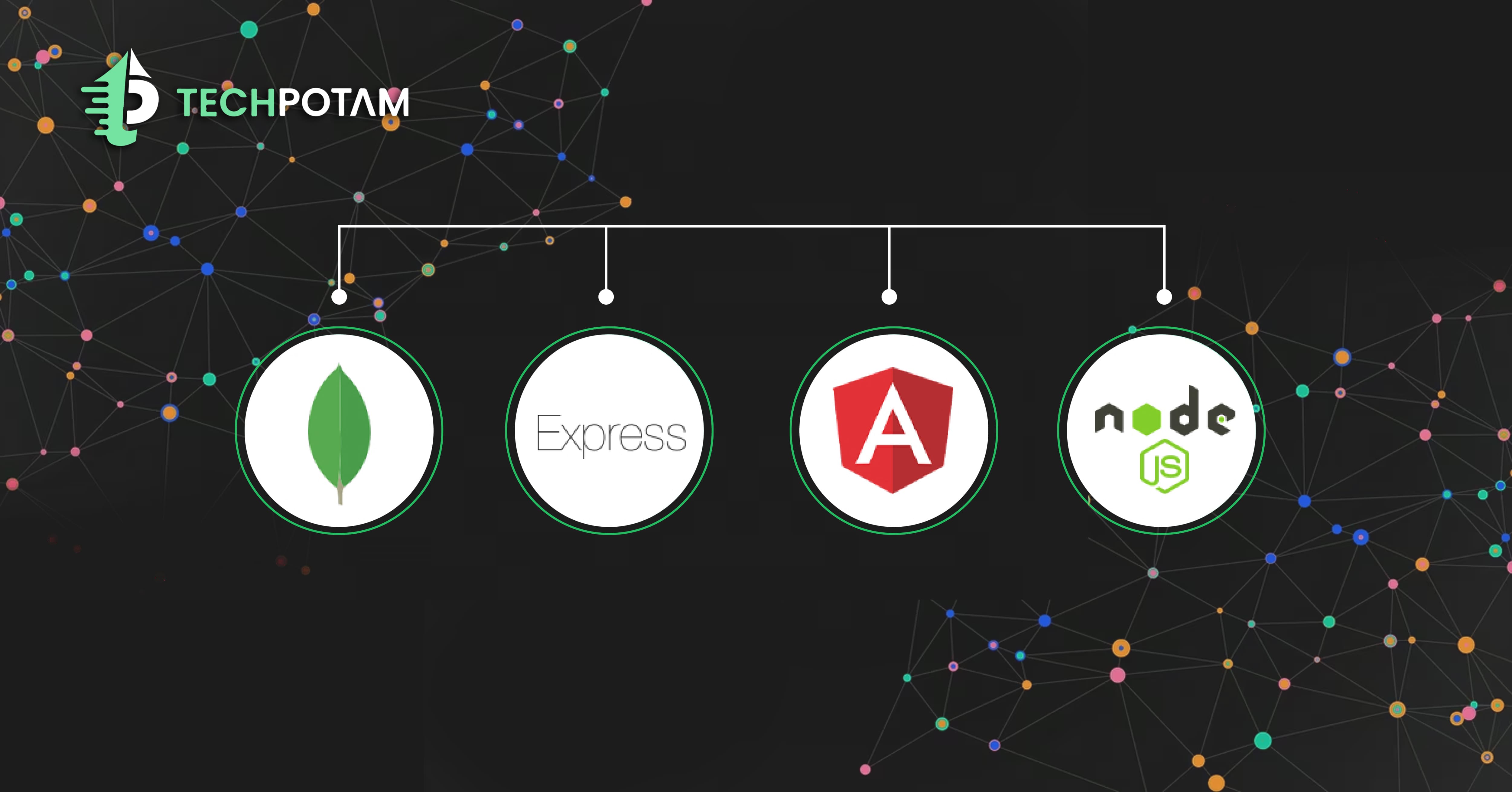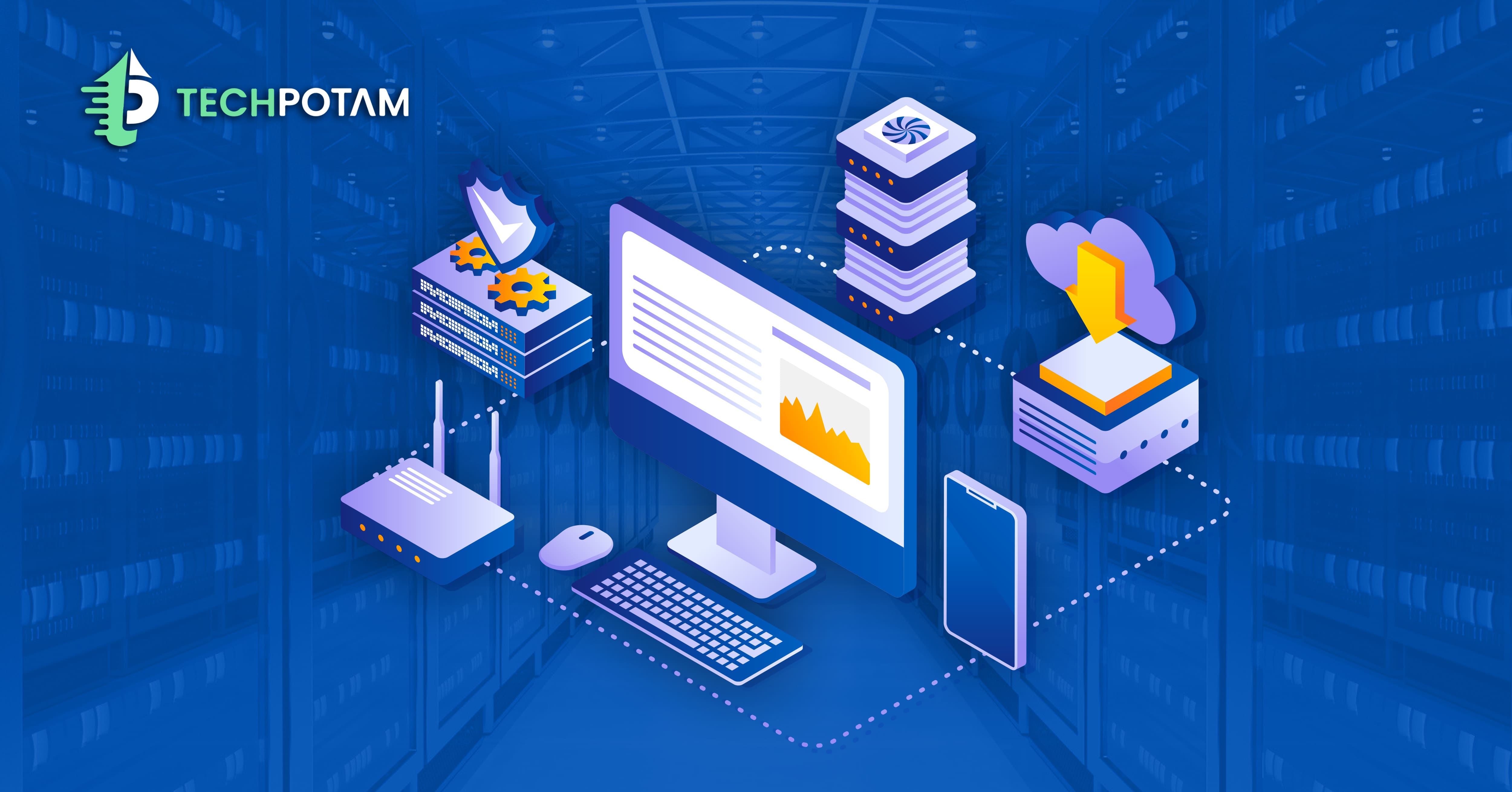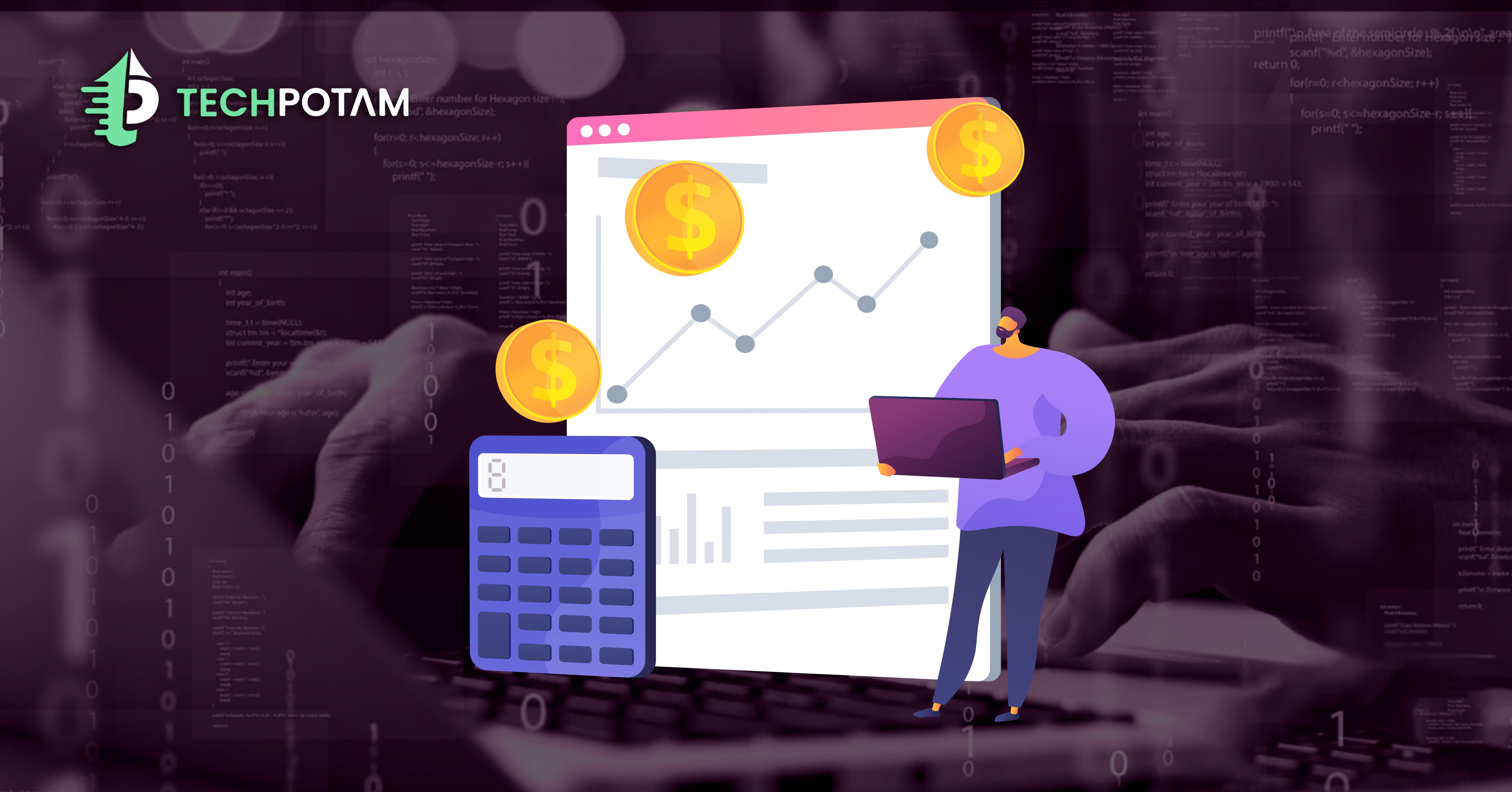In current ultramodern times, people, businesses, and many sectors can develop dynamic applications and use them to gain flexibility in their personal lives, jobs, and business domains. Positively, there are no limitations on Mobile Application Development that meet your demands and specifications because they are widely available, and making an app now costs a lot less than it did in the past.
Applications are created and used by a variety of industries, including retail, enterprise, automotive, electronics, health, education, construction, and telecommunications. These programs maintain a comparatively simple workflow and operations for these businesses.
What about its evolution, though? What is the complexity level of the application development life cycle? Going back a few years, the process of developing applications was challenging. On the other hand, in this digital age, creating an application has grown easier. So don’t worry; we’ll guide you through the principles of application development and all the information required to create one.
Let’s start with the basics!
What is Application Development?
The process of planning, creating, testing, and iteratively improving software applications for use on certain platforms, such as the web or mobile devices, is known as application development. Transforming an idea into a user-friendly, cross-platform application requires technical know-how, creativity, and a problem-solving methodology. Web programming languages such as HTML, CSS, and JavaScript are used by app developers to create high-performing, responsive applications.
Numerous kinds of application software enable individuals and organizations to streamline processes and increase output across various domains. These domains encompass daily discourse, correspondence, expense computation, arranging gatherings and summaries, among numerous other aspects.
The processes in any application development process are the same: collecting information in accordance with the needs of the customer, developing prototypes, testing, implementing, integrating, etc. The Application Development Life Cycle (ADLC) is the term given to the entire process, which aims to finish the app development project as quickly and efficiently as feasible.
Nonetheless, several application development approaches are employed to carry out this procedure.
Why is Application Development Important?
Building applications is essential these days due to its many uses and benefits. There are a plethora of unique apps and development styles available worldwide, including as desktop, online, and mobile development.
Businesses or their employers use off-the-shelf or custom application development services to fulfill their unique demands. Consequently, a variety of application development approaches, including Agile and Waterfall, Rapid Application Development, and many more, can be applied to accomplish a range of objectives.
Significant Advantages of Application Development
Businesses can effectively manage their tech-biz portfolio by utilizing the best software when they have strong application development software. The following are the top four advantages of application development:
Customization: With application development, you may design custom apps that can be modified to fit the particular needs of your company. It is possible to incorporate features and functionalities that store-bought solutions might not provide. Tailoring solutions is essential for addressing certain issues and streamlining procedures.
Integration: Workflow can be automated and data exchanged is made easier by applications that are made to be easily integrated with current systems and technologies. Businesses can improve operations by maximizing the use of their current infrastructure thanks to this integration capability.
Performance: Through strategies like code optimization, database tuning, and caching, using bespoke apps can maximize performance, resulting in quick response times, effective resource use, and enhanced user experience.
Innovation: By helping businesses to come up with original concepts and choose which technologies to use, application development can act as a springboard for innovation. Companies may unleash their creativity and generate fresh concepts to propel corporate success with the help of custom-developed apps. Consequently, this fosters an inventive culture within the company.
Let’s move on to the following portion of our post to learn about the various kinds and subtypes of application development as well as creative problem-solving techniques and industry best practices for creating effective applications.
What are The Different Types of Application Development?
People utilize three different kinds of applications all throughout the world. Let’s examine each of these many forms of application development separately.
1. Development of Web Applications
Web application development is the process of developing web apps using the top application development platform. Users download these applications from the internet, and they kept on remote computers.
Every time a business wants to connect with customers worldwide through the internet, they create a custom web application. Web applications are dynamic, web server-based pages with user input capabilities. Because the web application hosted online and accessible through a web browser, it differs from other applications. They are also less expensive, easier to backup, and more secure than others.
Native programs, which are installed on a device’s platform and made especially for it, are frequently compared with these apps.
2. Development of Mobile Applications
Mobile application development is the process of creating mobile applications that can run on various mobile platforms. A mobile platform is an operating system for mobile devices, to be more precise. These platforms have different guidelines, restrictions, and requirements for developing mobile applications.
Since they are knowledgeable about the specifics of each platform, seasoned mobile app developers handle the task with ease because it is just not feasible to design an application and port it to every platform.
I’m really grateful to those developers!
Let’s now examine the various approaches to developing mobile applications.
A native app: what is it?
An application that runs specifically on a mobile device, such as an Android phone, iPhone, Windows phone, etc., is referred to as a “native app.” These apps are designed specifically for a certain platform or operating system (OS).
A mobile web app: what is it?
Mobile web apps are made especially to be used with mobile devices. Websites may be made much more mobile-friendly with web applications. These work like native applications and are accessible through a mobile browser, so they can be accessed on any mobile device.
A hybrid app: what is it?
Hybrid applications are essentially a combination of native and online applications. Both are covered by the native app. Purchasing the aforementioned software via an internet marketplace or digital store is the most popular method.
3. Development of Desktop Applications
Nowadays, people hardly talk about desktop programs; instead, they talk about web and mobile applications. You may be asking yourself, what exactly is desktop application development?
Unlike web-based and mobile apps, desktop apps are software programs that interact directly with the operating system. Thus, developing software for desktops and laptops is referred to as desktop application development.
Typically, these programs are made for desktop operating systems like Linux, Windows, and macOS.
Before hiring custom app developers and beginning any application development, it is important to understand the various forms of application development. We sincerely hope that you understand these terms. You must be asking yourself now, how can I create an application.
Indeed, a successful application!
Crucial Phases in the Development of Applications
More than simply coding is required to create a great app; you also need to follow a methodical, step-by-step process and execute it carefully. For the greatest outcomes, you must adhere to these crucial steps:
1. Analysis and Planning
You must first thoroughly review your app idea to determine its goals, target market, and functionalities. It will serve as your project’s template for app development.
2. Sketching and Modeling
Developers design the user interface (UI) and user experience (UX) at this point, as well as build mockups or prototypes. Making the app both aesthetically beautiful and useful is the goal.
3. Development and Coding
This is the main stage where coding is used. Programming languages and other essential technologies used by developers to turn the idea into a working application.
4. Quality Control and Testing
Following the development stage, several tests should conducted to identify flaws and ensure that the app functions, performs as intended, and is secure.
5. Installation and Start-Up
Time for the show! The developers will now release your program on the platform of your choice or into the app stores (Google Play, program Store, etc.). They also take care of the technical aspects of releasing your software to the public.
6. Upkeep and modifications
Finally, to maintain your app current, safe, and compliant with changing user demands and technological advancements, you must continuously assess its performance, solicit user input, and release updates.
Best Practices for Successful Application Development
Even though developing and managing applications isn’t always easy, by following these best practices, businesses may guarantee a quick time to market and steady success. Furthermore, there is less chance of breaking bugs when using these best practices to design applications to high standards.
Let’s go!
- Get Your Group Ready Pay special attention to team training on updated or new apps. Additionally, teach them about the various tools available for developing applications. This is crucial since, to achieve the greatest outcomes, your internal staff must be knowledgeable about your application and its development.
- Collaborate with Skilled Partners – When it comes to creating and managing top-notch apps, a reliable application development business may be of great assistance. For the best results, pick an experienced partner who is willing to communicate and offers continuous support.
- Record Your Strategies – Make sure that every plan and strategy for the application development process adequately documented and shared with all relevant parties.
- UX Assessments: The user experience has a major role in how well an application performs. Conduct end-user-focused tests to identify and address possible issues.
- Communication Is Crucial: If you’re working with an outside application partner, communication is crucial. Maintain constant communication with all of the internal and external development teams in order to work together as efficiently as feasible.
- Be Versatile and Adaptable: The resources, organizational structure, and market conditions should all be able to accommodated by your applications.
- Retain Your Cool: Keep current with application standards, policies, and procedures to make sure your apps are compliant and shield you from any compliance difficulties.
Examples of Application Development
An intuitive user interface and scalable and adaptable architecture have become crucial requirements for app design as user expectations rise. These days, application development includes a wide range of enterprise systems, such as cloud-based mobile apps utilizing the Internet of Things (IoT), business intelligence apps, CRM apps, SCM systems, data management solutions, and marketing technology tools. The days of developing only online and mobile applications long gone. Globally, there are numerous instances of application development available in the market, including apps for project management, inventory management, marketing, expense monitoring, collaboration, HRMS, and more.
Cutting-edge app development tools like TFS, Visual Studio, SQL Server Management Studio (SSMS), and VSTS used by today’s top application development organizations.
Additionally, they employ state-of-the-art technologies such as VB.Net, jQuery, C#, MVC, MVVM, and.NET 4.5 to develop dependable apps that enhance workflow management, process efficiency, and quality assurance. Because a well-developed application uses less time, resources, and overhead, organizations can achieve a large increase in throughput.
Tips for Successful Application Development
To give end consumers outstanding user experiences, software programs must developed and maintained. The best ways to reach a large market and make decent money are through online and mobile applications, according to the most recent statistics on app usage. In 2024, the projected revenue amounts to USD 522,717.51 million. Because millions of applications released every day, it’s a good idea to keep the following in mind:
- When choosing a tech partner or organization, make sure you fully comprehend the services and application development standards offered by each one.
- Examine several application development platforms and decide which one best meets your company’s needs.
- Make sure the processes emphasize iterations to add new features or fix bugs as well as continual improvement.
- When developing your application, security should be your top priority.
- Your application development software should regularly tested and updated to guarantee optimal speed, strong security, and a flawless, error-free user experience.
Application Development: Most Common Tech Stack Scenarios
The main tech-stack scenarios for many application development types—from desktop to Android apps—have covered here. The provided stacks can changed to meet your own business needs.
1. Android App Development
- Programming languages: Java, Kotlin: Java and Kotlin used by developers to create Android apps. The primary language for developing Android applications, which includes an extensive set of frameworks and tools, has always been Java. Nevertheless, Kotlin’s contemporary features and subtleties while dealing with Java Code have made it popular.
- IDE: Android Studio – This official integrated development environment (IDE) created especially for creating Android apps. It provides all the tools required for planning, creating, and debugging.
- Frameworks: SDK for Android
- SQLite database, room
2. iOS App Development
- Languages: Swift, Objective-C – Swift or Objective-C are the most popular programming languages for creating iOS platforms. Because of its current language features and safety net capabilities, Swift has emerged as the de facto language for iOS programming. Swift is replacing Objective-C in more recent projects, however some older ones still use it.
- IDE: Xcode – Xcode, the official integrated development environment for iOS, offers tools for creating user interfaces, putting code into practice, and finding errors.
- Frameworks: UIKit, SwiftUI
- Database: Core Data, Realm
3. Cross-Platform App Development
- Languages: C# (Xamarin), Dart (Flutter), and JavaScript (React Native) – React Native, Flutter, and Xamarin the most widely utilized general-purpose frameworks on all platforms combined. JavaScript is the foundation of React Native, which enables code reuse across iOS and Android. Flutter offers native performance by utilizing a single codebase for both iOS and Android, and it written in Dart. Using the C# cross-platform development framework Xamarin, developers may share the same kernel between Windows, iOS, and Android platforms.
- IDEs: Android Studio (React Native); Visual Code Studio (Flutter, Xamarin) Microsoft’s lightweight, open-source IDE called Visual Code Studio. It is compatible with JS, TS, and Dart programming languages, as well as deployment frameworks like Flutter and React or Native. It offers functions like Git integration, debugging, and IntelliSense. However, Android Studio is primarily concerned with creating Android applications. But it also works with cross-platform frameworks like Flutter. It has capabilities unique to Android development combined with a sizable toolkit for creating, distributing, and debugging Flutter applications.
- Frameworks: Xamarin, Flutter, and React Native
4. Hybrid App Development
- The user interface and logic of a program that runs inside the device’s built-in sandbox, which serves as the app container, can written in HTML, CSS, and JavaScript. One benefit of web technologies is that code may created once and then distributed to multiple platforms, such as smartphones running iOS and Android.
- Frameworks: PhoneGap, Ionic, and Apache Cordova – By encapsulating web technologies within native containers, these frameworks enable web developers to leverage web technologies to access native device functionalities.
- IDE: Visual Code, Xcode, and Android Studio
5. Development of Web Applications
- Frontend: HTML, CSS, and JavaScript – These front-end frameworks serve as the fundamental building blocks for creating user interfaces and interactive applications.
- Backend: Node.js, Python (Flask, Django), Ruby (Ruby on Rails), Java (Spring) – These backend frameworks are utilized for data storage tasks and a component of the server-side logic layer.
- Databases: MongoDB, PostgreSQL, and MySQL
6. Progressive Web App Development Technologies:
HTML, CSS, JavaScript – PWA leverage these contemporary technologies along with web app manifests and service workers to offer features like home screen installations, push notifications, and offline support.
- Frameworks: Angular, Vue.js, React
7. Desktop App Development
- Languages: Java (JavaFX, Swing), C# (WPF, WinForms), C++ (Qt, GTK+), and Electron (JavaScript, HTML, and CSS) – With the use of these technologies, developers can access the capabilities and functionalities that the operating system exposes by creating native desktop programs.
The Wise Way to Selecting an Ideal App Development Company
When it comes to making the decision to outsource your app development, the following elements might be quite important in ensuring the success of your project:
- Expertise and Experience: Be sure to take into account a business that has demonstrated some success in the app development industry, especially in your specific specialty. Examine their case studies, portfolio, and client testimonials carefully to determine their level of experience.
- Technology Stack: Verify that the business develops apps using cutting-edge, efficient technologies. This includes a range of databases like MySQL and MongoDB, frameworks like React Native and Flutter, and languages like Java and Kotlin, among others.
- Development Process: To guarantee prompt delivery and high-quality product development, the organization should follow a structured development cycle such as Agile or DevOps. This covers CI/CD, sprint planning, and continuous communication.
- UX and Design: What distinguishes a winning software is its smooth UX and intuitive design. Make sure the organization can create interfaces that are visually appealing and has experience with UI/UX design.
- Security Procedures: The first priority needs to be app security. Verify that the business is implementing secure authorization processes, robust encryption, and defense against frequent vulnerabilities (such as the OWASP Top 10).
- Scalability: You can also see how prepared the business is for future growth in terms of scale. One of their objectives should be to design a scalable architecture that can accommodate new features and ever-growing user numbers without requiring significant code modification.
- Quality Control and Testing: Strict testing protocols must used from the start in order to identify and correct errors. Make that the company does thorough testing, including security, performance, and functional testing.
- After-launch Assistance: It would be beneficial to identify a company that oversees and preserves its functionality following the launch of the application. This could involve updates, bug fixes, and OS compatibility with more recent releases.
- Money & Budget: Although money is undoubtedly important, it shouldn’t be the only consideration. Assess the quality-based long-term value of your services.
- Communication and openness: Throughout development, it is crucial to maintain open lines of communication and openness. Make sure the company responds to your complaints and criticism, and that it provide frequent updates.
Future of Application Development
New trends in software development materialize out of thin air in an instant. As a result, there will be a number of changes to the application development landscape in the upcoming years. Let’s examine these upcoming developments.
- AI Integration in Applications: In the future, app development will use AI technologies more and more, such as machine learning and natural language processing. This will make it possible for apps to offer automated repetitive activities, predictive analytics, and tailored experiences. In line with the most popular trends in mobile app development, you might also see the incorporation of cutting-edge technology like blockchain, beacons, 5G, etc.
- Encouraging Corporate Users through Civic Engagement: Using low-code/no-code platforms, non-technical people referred to as “citizen developers” construct programs. This approach lessens reliance on the IT department by enabling business users to create apps tailored to their needs.
- The explosion of low- and no-code development: There will be an increase in the availability of low-code and no-code development environments, which let consumers create apps without needing to know a lot of code. By utilizing pre-built components and visual interfaces, these platforms enable quicker app development, shorter time-to-market, and lower costs.
Conclusion
We hope that this has made the definition of “application development” and its various facets more clear. To make sure that their apps stand out from the competition and are helpful to end users, businesses use a variety of application development tools and resources along with best practices.
Furthermore, business organizations can automate a variety of repetitive operations with the help of software, adding value for the end user. But, to be honest, creating applications takes skill and is not a simple task.


